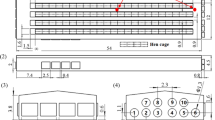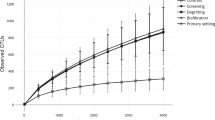Abstract
Little is known about the factors influencing the abundance and community composition of airborne biotic contaminants in swine confinement buildings (SCBs). Microbial air samples were collected from three different SCBs equipped with three different types of manure removal systems (deep-pit manure removal with slats, scraper removal system, and deep-litter bed system). The abundance and composition of airborne biotic contaminants of all the collected air samples were analyzed using cultivation-independent methods. The V1–V3 region of the 16S rRNA gene was amplified from the extracted DNA and sequenced using 454-pyrosequencing. The abundances of 16S rRNA genes and six tetracycline resistance genes (tetB, tetH, tetZ, tetO, tetQ, and tetW) were quantified using real-time PCR. The abundance of 16S rRNA gene and tetracycline resistance genes were significantly higher in SCBs equipped with a deep-pit manure removal system with slats, except for tetB gene. This contrasts with the opposite trend found previously by culture-based studies. The aerial bacterial community composition, as measured by pairwise Bray–Curtis distances, varied significantly according to the manure removal system. 16S rRNA-based pyrosequencing revealed Firmicutes (72.4 %) as the dominant group with Lactobacillus as the major genus, while Actinobacteria constituted 10.7 % of the detectable bacteria. Firmicutes were more abundant in SCBs with deep pit with slats, whereas Actinobacteria were highly abundant in SCBs with a deep-litter bed system. Overall, the results of this study suggest that the manure removal system plays a key role in structuring the abundance and composition of airborne biotic contaminants in SCBs.





Similar content being viewed by others
References
Blake, D., Hillman, K., Fenlon, D., & Low, J. (2003). Transfer of antibiotic resistance between commensal and pathogenic members of the Enterobacteriaceae under ileal conditions. Journal of Applied Microbiology, 95(3), 428–436.
Chang, C., Chung, H., Huang, C.-F., & Su, H.-J. J. (2001). Exposure of workers to airborne microorganisms in open-air swine houses. Applied and Environmental Microbiology, 67(1), 155–161.
Clarke, K. R., & Gorley, R. N. (2006). PRIMER v6: user manual/tutorial. Plymouth, UK: Primer-E Ltd.
Cole, D., Todd, L., & Wing, S. (2000). Concentrated swine feeding operations and public health: a review of occupational and community health effects. Environmental Health Perspectives, 108(8), 685.
Donham, K. J., Merchant, J. A., Lassise, D., Popendorf, W. J., & Burmeister, L. F. (1990). Preventing respiratory disease in swine confinement workers: intervention through applied epidemiology, education, and consultation. American Journal of Industrial Medicine, 18(3), 241–261.
Duan, H., Chai, T., Liu, J., Zhang, X., Qi, C., Gao, J., et al. (2009). Source identification of airborne Escherichia coli of swine house surroundings using ERIC-PCR and REP-PCR. Environmental Research, 109(5), 511–517.
Dumas, M. D., Polson, S. W., Ritter, D., Ravel, J., Gelb, J., Jr., Morgan, R., et al. (2011). Impacts of poultry house environment on poultry litter bacterial community composition. PLoS ONE, 6(9), e24785.
Edgar, R. C., Haas, B. J., Clemente, J. C., Quince, C., & Knight, R. (2011). UCHIME improves sensitivity and speed of chimera detection. Bioinformatics, 27(16), 2194–2200.
Fries, R., Akcan, M., Bandick, N., & Kobe, A. (2005). Microflora of two different types of poultry litter. British Poultry Science, 46(6), 668–672.
Heuer, H., Krögerrecklenfort, E., Wellington, E., Egan, S., van Elsas, J., Overbeek, L., et al. (2002). Gentamicin resistance genes in environmental bacteria: prevalence and transfer. FEMS Microbiology Ecology, 42(2), 289–302.
Hong, P. Y., Li, X., Yang, X., Shinkai, T., Zhang, Y., Wang, X., et al. (2012). Monitoring airborne biotic contaminants in the indoor environment of pig and poultry confinement buildings. Environmental Microbiology, 14(6), 1420–1431.
Kim, K. Y., Ko, H. J., Kim, H. T., Kim, Y. S., Roh, Y. M., Lee, C. M., et al. (2007). Monitoring of aerial pollutants emitted from swine houses in Korea. Environmental Monitoring and Assessment, 133(1–3), 255–266.
Kristiansen, A., Saunders, A. M., Hansen, A. A., Nielsen, P. H., & Nielsen, J. L. (2012). Community structure of bacteria and fungi in aerosols of a pig confinement building. FEMS Microbiology Ecology, 80(2), 390–401.
KFDA (Korean Food and Drug Administration) (2006). Establishment of control system of antibiotics for livestocks. 19–35.
Kumari, P., & Choi, H. L. (2014). Seasonal variability in airborne biotic contaminants in swine confinement buildings. PLoS ONE, 9(11), e112897.
Lee, S.-A., Adhikari, A., Grinshpun, S. A., McKay, R., Shukla, R., & Reponen, T. (2006). Personal exposure to airborne dust and microorganisms in agricultural environments. Journal of Occupational and Environmental Hygiene, 3(3), 118–130.
Leser, T. D., Amenuvor, J. Z., Jensen, T. K., Lindecrona, R. H., Boye, M., & Møller, K. (2002). Culture-independent analysis of gut bacteria: the pig gastrointestinal tract microbiota revisited. Applied and Environmental Microbiology, 68(2), 673–690.
Levy, S. B., McMurry, L. M., Barbosa, T. M., Burdett, V., Courvalin, P., Hillen, W., et al. (1999). Nomenclature for new tetracycline resistance determinants. Antimicrobial Agents and Chemotherapy, 43(6), 1523–1524.
Martin, S. A., McCann, M. A., & Waltman, W. D. (1998). Microbiological survey of Georgia poultry litter. The Journal of Applied Poultry Research, 7(1), 90–98.
Nehmé, B., Gilbert, Y., Létourneau, V., Forster, R. J., Veillette, M., Villemur, R., et al. (2009). Culture-independent characterization of archaeal biodiversity in swine confinement building bioaerosols. Applied and Environmental Microbiology, 75(17), 5445–5450.
Nehme, B., Létourneau, V., Forster, R. J., Veillette, M., & Duchaine, C. (2008). Culture-independent approach of the bacterial bioaerosol diversity in the standard swine confinement buildings, and assessment of the seasonal effect. Environmental Microbiology, 10(3), 665–675.
Nonnenmann, M., Bextine, B., Dowd, S., Gilmore, K., & Levin, J. (2010). Culture-independent characterization of bacteria and fungi in a poultry bioaerosol using pyrosequencing: a new approach. Journal of Occupational and Environmental Hygiene, 7(12), 693–699.
Olson, D., & Bark, S. (1996). Health hazards affecting the animal confinement farm worker. AAOHN Journal, 44(4), 198.
Pearson, C., & Sharples, T. (1995). Airborne dust concentrations in livestock buildings and the effect of feed. Journal of Agricultural Engineering Research, 60(3), 145–154.
Predicala, B. Z., Urban, J. E., Maghirang, R. G., Jerez, S. B., & Goodband, R. D. (2002). Assessment of bioaerosols in swine barns by filtration and impaction. Current Microbiology, 44(2), 136–140.
Robbins, C. A., Swenson, L. J., Nealley, M. L., Kelman, B. J., & Gots, R. E. (2000). Health effects of mycotoxins in indoor air: a critical review. Applied Occupational and Environmental Hygiene, 15(10), 773–784.
Schloss, P. D., Westcott, S. L., Ryabin, T., Hall, J. R., Hartmann, M., Hollister, E. B., et al. (2009). Introducing mothur: open-source, platform-independent, community-supported software for describing and comparing microbial communities. Applied and Environmental Microbiology, 75(23), 7537–7541.
Smalla, K., Heuer, H., Götz, A., Niemeyer, D., Krögerrecklenfort, E., & Tietze, E. (2000). Exogenous isolation of antibiotic resistance plasmids from piggery manure slurries reveals a high prevalence and diversity of IncQ-like plasmids. Applied and Environmental Microbiology, 66(11), 4854–4862.
Unno, T., Jang, J., Han, D., Kim, J. H., Sadowsky, M. J., Kim, O. S., et al. (2010). Use of barcoded pyrosequencing and shared OTUs to determine sources of fecal bacteria in watersheds. Environmental Science and Technology, 44(20), 7777–7782. doi:10.1021/Es101500z.
Whyte, R. T. (1993). Aerial pollutants and the health of poultry farmers. World’s Poultry Science Journal, 49, 139–153.
Yao, H., Choi, H., Lee, J., Suresh, A., & Zhu, K. (2010). Effect of microclimate on particulate matter, airborne bacteria, and odorous compounds in swine nursery houses. Journal of Animal Science, 88(11), 3707–3714.
Yao, H., Choi, H., Zhu, K., & Lee, J. (2011). Key volatile organic compounds emitted from swine nursery house. Atmospheric Environment, 45(15), 2577–2584.
Zejda, J. E., Barber, E., Dosman, J. A., Olenchock, S. A., McDuffie, H. H., Rhodes, C., et al. (1994). Respiratory health status in swine producers relates to endotoxin exposure in the presence of low dust levels. Journal of Occupational and Environmental Medicine, 36(1), 49–56.
Zhu, Y.-G., Johnson, T. A., Su, J.-Q., Qiao, M., Guo, G.-X., Stedtfeld, R. D., et al. (2013). Diverse and abundant antibiotic resistance genes in Chinese swine farms. Proceedings of the National Academy of Sciences, 110(9), 3435–3440.
Acknowledgments
This work was supported by the Korea Institute of Planning and Evaluation for Technology in Food, Agriculture, Forestry, and Fisheries (IPET) from the Ministry of Agriculture, Food, and Rural Affairs (MAFRA) through project no. 312036-03-2-HD030 and in part by the Korea Institute of Energy Technology Evaluation and Planning (KETEP) from the Ministry of Trade, Industry and Energy (MOTIE) through project no. 2012-3020090040. The funders had no role in study design, data collection and analysis, decision to publish, or preparation of the manuscript. Priyanka Kumari was supported by a scholarship from the BK21 Plus Program.
Author information
Authors and Affiliations
Corresponding author
Electronic supplementary material
Below is the link to the electronic supplementary material.
ESM 1
(DOCX 18 kb)
Rights and permissions
About this article
Cite this article
Kumari, P., Choi, H.L. Manure removal system influences the abundance and composition of airborne biotic contaminants in swine confinement buildings. Environ Monit Assess 187, 537 (2015). https://doi.org/10.1007/s10661-015-4759-0
Received:
Accepted:
Published:
DOI: https://doi.org/10.1007/s10661-015-4759-0




